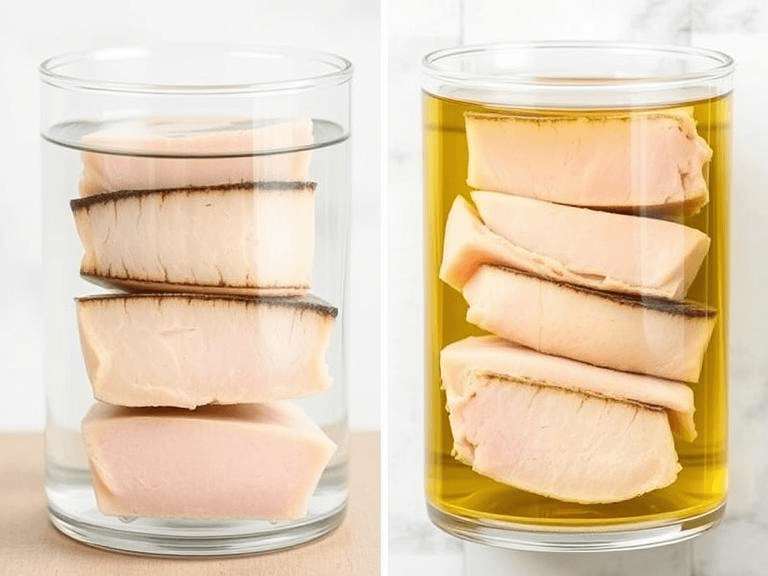
When caring for pets, many owners question what human foods they can provide to their dogs. Tuna, which exists as a basic pantry ingredient containing both protein and omega-3 essential nutrients, poses uncertainty to many pet owners. Can dogs eat tuna? There’s no absolute answer about whether dogs can eat tuna since the preparation method and serving amount, along with individual dog health requirements, matter. The following guide analyses tuna safety in dog nutrition and provides veterinarian-recommended rules and alternative food choices for doggy dietary health.

The Benefits of Tuna for Dogs
Tuna isn’t just a tasty treat; it’s packed with nutrients that can benefit dogs when served responsibly.
- Omega-3 Fatty Acids: Supports healthy skin and a shiny coat and reduces joint inflammation.
- Lean Protein: Builds muscle and fuels energy without excess fat.
- Vitamins & Minerals: B12, selenium, and niacin boost metabolism and immunity.
But before you crack open a can, let’s explore the risks..

Potential Risks of Feeding Tuna to Dogs
While tuna offers perks, it’s not risk-free. Key concerns include:
1. Mercury Poisoning
Tuna (especially larger species like albacore) accumulates mercury, a heavy metal toxic to dogs over time. Symptoms of mercury toxicity include:
- Vomiting
- Loss of coordination
- Kidney damage
Veterinary Insight:
Dr. Sarah Mitchell, DVM, warns, “Small amounts of low-mercury tuna occasionally are fine, but daily feeding can lead to dangerous mercury buildup.”

2. High Sodium Content
Canned tuna in oil or brine is loaded with salt, which strains a dog’s kidneys and increases the dehydration risk.
3. Allergies & Digestive Issues
Some dogs develop allergies to fish, causing itching, vomiting, or diarrhea. Introduce tuna slowly and watch for reactions.
Safe Feeding Guidelines
To minimize risks, follow these rules:
✅ Choose the Right Tuna
- Fresh or Canned in Water: Skip oil, salt, or flavor additives.
- Cooked Plain: Raw tuna risks parasites; always cook thoroughly.
- Low-Mercury Types: Opt for skipjack or light tuna over albacore.
✅ Portion Control
- Small Dogs (under 20 lbs): 1–2 teaspoons weekly.
- Medium Dogs (20–60 lbs): 1–2 tablespoons weekly.
- Large Dogs (60+ lbs): 1–2 ounces weekly.
Never replace meals with tuna—it lacks balanced nutrients for long-term health.

Safer Alternatives to Tuna
If mercury worries you, try these dog-friendly fish:
- Salmon (cooked, boneless)
- Sardines (packed in water, no salt)
- Whitefish (e.g., cod or haddock)
These options are lower in mercury and rich in similar nutrients.

Veterinary Insights
Dr. Emily Carter, a veterinary nutritionist, advises:
“Tuna should be a ‘sometimes treat,’ not a staple. Always pair it with a balanced diet and consult your vet if your dog has health issues like kidney disease.”

Conclusion: Can Dogs Eat Tuna?
Yes, but only in moderation. Occasionally, plain, cooked tuna is safe for most dogs but avoid making it a habit. Prioritise low-mercury options and always skip added salt or seasoning.
Call to Action
When in doubt, ask a pro. Consult your veterinarian before adding tuna to your dog’s diet—especially if they have health conditions.
FAQ Can Dogs Eat Tuna
Puppies have developing immune systems; avoid tuna due to mercury risks.
No—raw fish may contain harmful parasites.
Mercury toxicity builds over time; stick to tiny, infrequent servings.
Omega-3s may help, but consult your vet for targeted solutions.
Yes—they’re formulated to meet nutritional standards.
Monitor for vomiting or diarrhea and contact your vet if symptoms arise.
